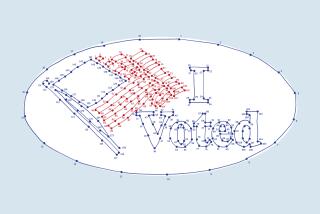Why should California’s primary be moved up with Iowa and New Hampshire?

- Share via
It’s a proposal with certain appeal for Californians who didn’t want to vote for Donald Trump or Hillary Clinton in the 2016 presidential primary. But should California really move up its primary from June to March beginning in 2020 so it’s just behind elections in Iowa and New Hampshire?
That’s the aim of Senate Bill 568, which California Secretary of State Alex Padilla and state Sen. Ricardo Lara, D-Bell Gardens, proposed to give California’s 19.4 million registered voters — far and away the most in any state — a greater say in a presidential primary process many call broken. It left America with two candidates that millions of people despised and couldn’t imagine in the White House. Yet their nominations were all but sewn up when Californians voted in the state’s June 2016 primary.
“A state as populous and diverse as California should not be an afterthought,” Padilla says.
That’s true. But The San Diego Union-Tribune Editorial Board urges a full, careful vetting of this idea so that lawmakers understand just what their changes would do to California elections. Worth noting, this proposal would also move up primary elections in statewide office and legislative races.
That introduces its own issues.
Incumbents who will have been in office for less than two-thirds of their terms would have to campaign for re-election that much quicker, challengers might have less time to get their message out, and voters would have to endure a much earlier primary campaign — likely beginning (as Los Angeles Times columnist George Skelton noted scarily) around Halloween — as well as a longer general election campaign. Is that what we want? Let’s not introduce unintended consequences for California.
SB 568 would move California’s presidential primary to the third Tuesday in March and allow the governor to move it earlier if other states moved up their primary elections. Imagine the crowd of states that might choose to do just that. Assuming California does successfully become the third state in our nation’s long, drawn-out nomination process, what would it mean? It could mean presidential candidates would highlight and endorse issues and ideas that are important to California voters. It could also mean voter turnout would increase because Californians would play an earlier role in winnowing the presidential field. But how do we know?
Historically, an earlier California primary hasn’t meant far greater turnout. In the state’s past 10 presidential primaries, the greatest turnout was 63.3 percent in June 1980. Turnout hovered between 47.5 percent and 48.7 percent in the June primaries in 1984, 1988 and 1992, then fell to 41.9 percent in 1996 when the primary was moved to March. Turnout spiked to 53.9 percent in March 2000 then fell back to 44.3 percent in March 2004.
California voter turnout soared to 57.7 percent in the 2008 primary, when the date was moved up to Feb. 5 — Super Tuesday. Moved back to June, voter turnout plummeted to 31.1 percent in 2012 but climbed back to 47.7 percent in 2016. In other words, you can use these numbers to argue that an earlier primary would boost turnout — as it did in 2000 and 2008 — or to show that turnout could suffer, as in 1996 and 2004. Proceed with caution, California.
Twitter: @sdutIdeas
Facebook: San Diego Union-Tribune Ideas & Opinion
More to Read
A cure for the common opinion
Get thought-provoking perspectives with our weekly newsletter.
You may occasionally receive promotional content from the Los Angeles Times.










